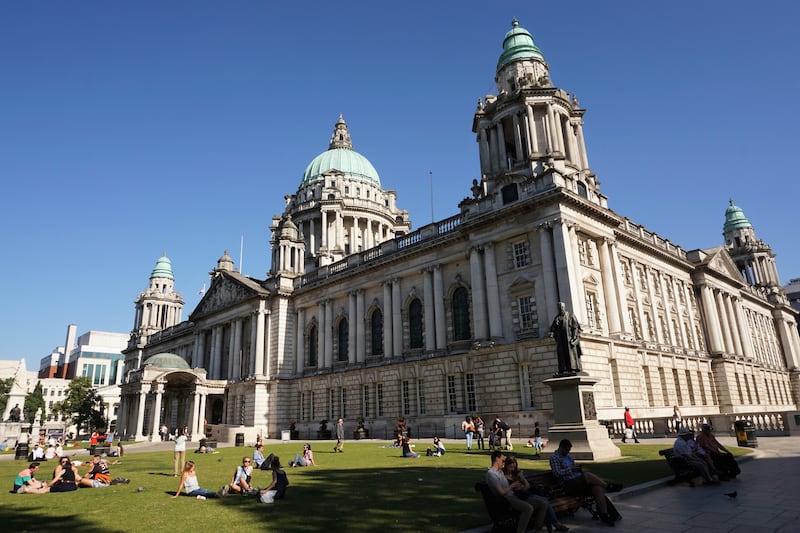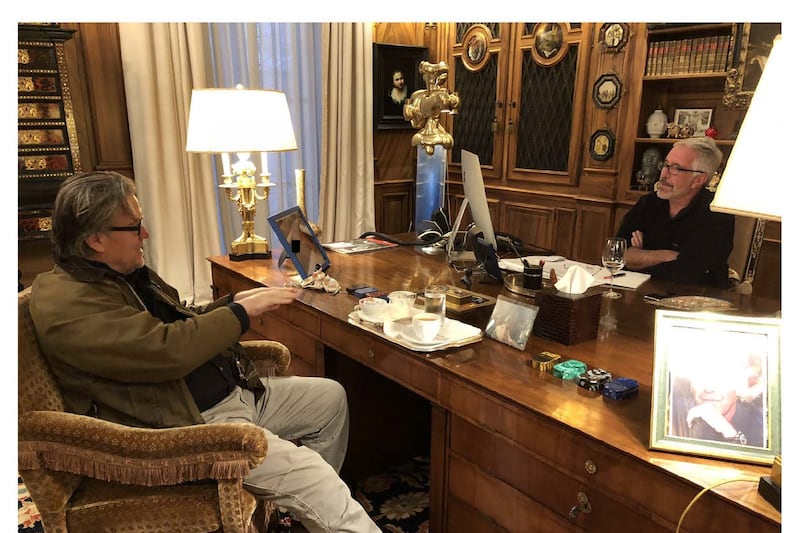When artist and political cartoonist Brian John Spencer requested permission to attend and sketch a meeting of Belfast City Council, in preparation for a larger scale painting of the council in action, he was initially rebuffed.
In December, a council committee voted in favour of a Sinn Féin proposal to deny the request, which “would involve Spencer being allowed access to the Chamber for a couple of hours prior to the meeting commencing and for him to be present in the VIP gallery to also sketch during the meeting”.
Sitting quietly sketching in the gallery seems like a fairly innocuous thing to do. The council’s democratic services manager recommended that the artist be allowed the access he had asked for.
So why was Sinn Féin so determined to keep Spencer out?
The answer became clear when the full council meeting took place in January. Ulster Unionist councillor Jeff Dudgeon tabled an amendment seeking to overturn the decision to exclude the artist from the chamber.
Describing the ban as “a needless act of censorship” on the part of those who voted to deny the request, Dudgeon said that “a ban, if upheld by the council, would breach freedom of expression rights that are guaranteed within the European Convention.”

Permission denied
But Sinn Féin’s council group leader Ciarán Beattie said that even if the council decided to allow Spencer to sketch the council chamber, he would not be allowed to draw Sinn Féin representatives.
“The artist involved has been involved in some controversial cartoons, namely about our party as well,” Beattie said.
“So we will be opposing it and, whether we are successful or not, the cartoonist will not have permission to draw me or, I’m sure, any of my colleagues.”
Last year, Brian John Spencer made a cartoon which was critical of Sinn Féin, referencing the 1976 Kingsmills massacre in which ten Protestant workmen were killed by the IRA, after the party's then MP Barry McElduff tweeted a video of himself with a Kingsmill loaf on his head.

There were further objections to Spencer’s presence from SF councillor Arder Carson, who claimed that it was his democratic right to choose not to be painted.
“I have a right to choose what I want to do as well,” he argued, “so if you want to deny me my right to function in a democratic chamber and you vote for this, then I definitely won’t be here, so you are censoring me.”
Jeff Dudgeon’s amendment to overturn the ban was passed, however, and was backed by all parties except Sinn Féin. Now the way is open for Brian John Spencer to create his Belfast City Council artwork. How will he react if there is a Sinn Féin walk-out when he takes his seat in the gallery?
“That would be deeply regrettable and a great shame,” says Spencer. “There is no ill-feeling on my part. If anything, I want to reach out a hand. What I have in mind is a shared piece, there are no political colours in it. I really think that the Sinn Féin representatives jumped the gun with this.”
Scene inspiration
Spencer is “bewildered” by the rumpus, especially because he isn’t planning to draw a mocking cartoon of councillors.
Rather, taking ambitious inspiration from Sir John Lavery's famous 1916 painting of the trial of Roger Casement, and from William Orpen's great depiction of the signing of peace treaty at Versailles in 1919, he wants to produce an image which is as much about the ornate, evocative setting as it is about the people within it.
It's not acceptable for councillors to say, 'I don't like your art so I'm not allowing you to create it'
Although Spencer responded stoutly to the criticism of his Kingsmills cartoon – he pointed out that “the job of an artist is to observe events and point out hypocrisy and wrongdoing wherever it exists” – he produces few political cartoons these days, finding them difficult and time-consuming.
Instead, he has been doing portraits at the recent motivational Pendulum Summit in Dublin, and travelling around Ireland painting landscapes in each county he visits.
Spencer describes his own political vantage-point as "very very very pale orange". He says that "when I did the trip around Ireland, I stayed with an Orangeman in Armagh and an ex-IRA man in Louth. I feel I've established my credentials as a cross-community kicker and also someone who gets on well with most people."
‘Easily irritated’
Sinn Féin’s determination to avoid Spencer’s paintbrush has drawn both mockery and rebuke from political opponents.
“Sinn Féin gets very easily irritated when things don’t go their way at City Hall, because they feel like they are in charge,” says Jeff Dudgeon.
“But their approach to this issue is grotesque, and their petulant threats [to walk out] leave them wide open to criticism.”
SDLP councillor Donal Lyons considers the SF stance as "thin-skinned" and "an absolute farce". He says: "The council promotes the vibrant art and culture of our city, and we don't want artists to be stymied by whatever the political powerhouse is at the time.
“It’s not acceptable for councillors to say, ‘I don’t like your art so I’m not allowing you to create it.’ ”
Sinn Féin did not respond to requests from The Irish Times for comment on the situation.
“I do feel more of a spotlight on me now, after all this, and I’m always quite self-conscious about my work anyway,” says Spencer.
“But I’m still going to go ahead and paint them, it would be ridiculous if I didn’t, even though I’m persona non grata.”














